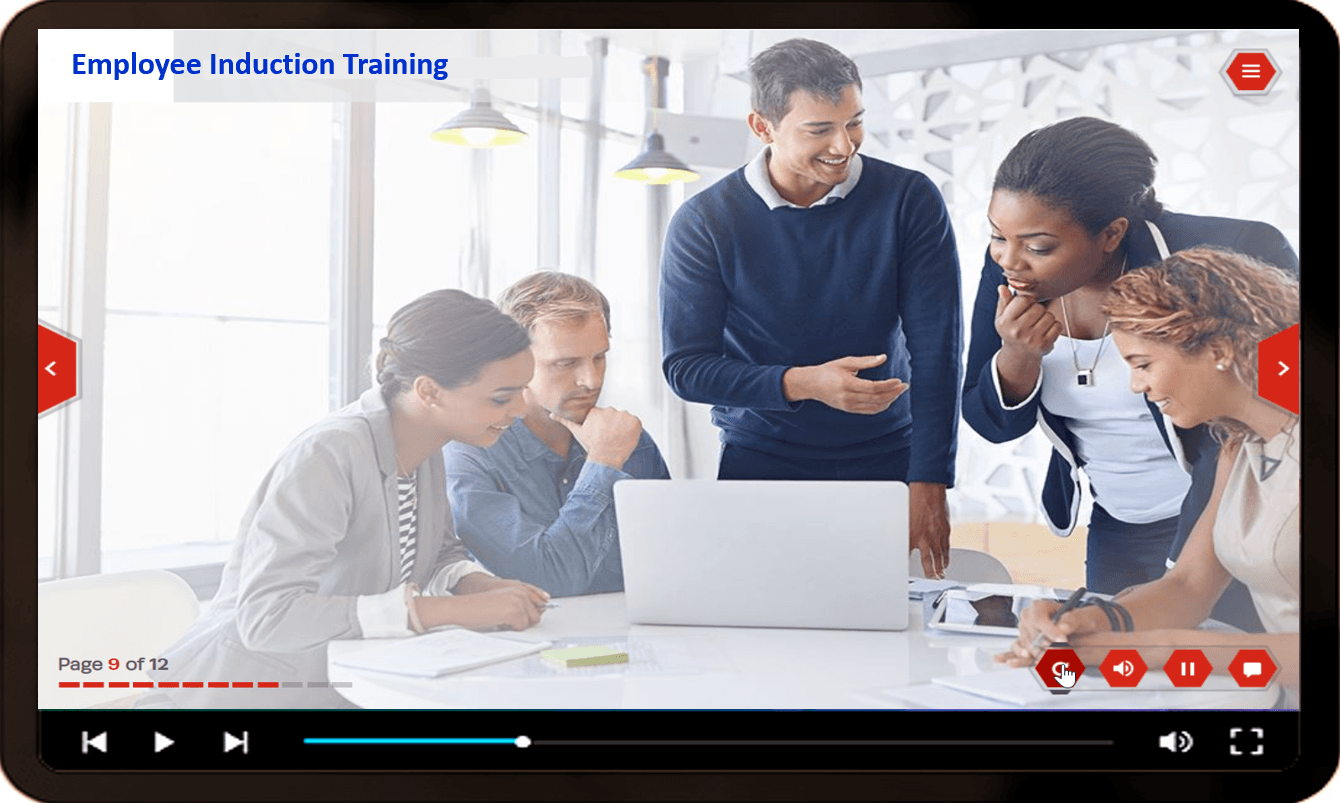Video-Based Learning Scenarios With Examples
Video-based learning has some major benefits, especially when it comes to corporate training. You can cover a wide range of topics in your training videos that cover real-life challenges at the workplace, describe a standard operating procedure (SOP) or a typical process in action, or explain a safe or unsafe situation while at work. You can even provide soft skills training like communication, negotiation, or sales presentation to your employees. With the help of the latest technologies and tools, you can create engaging training videos that significantly impact their learning and enhance the capabilities of your employees.
With the widespread use of smartphones and tablets, video-based learning has gained popularity as an on-demand and on-the-go training solution. Also, training videos have become a cost-effective solution for professional training. You can even embed interactive elements like simulations, virtual reality, and gamification in video-based learning to deliver immersive and engaging training solutions to your employees.
This article will look at 3 effective and impactful examples of video-based training.
Scenario 1: Use Videos For Training Demos On Software Applications
Organizations use different software applications for conducting their business. Suppose the employees are provided training on how to use a particular application, with the help of training videos and demo videos. In that case, it becomes easy for the employees to use the software without any hassle. Video-based learning is a suitable solution for providing training on performing certain tasks in a software application.

This is a training video on the Microsoft Teams application. The training module is designed to provide the employees with practical knowledge on how to perform certain tasks in the application. Teaser videos containing real-world scenarios are included at the beginning of the training to grab the learners' attention. This module includes videos that demonstrate how to create polls using Microsoft Forms, showcase the steps to follow when scheduling meetings and webinars, and illustrate how to create channels in the application and set privacy options. Since the videos include live demos, learners find them easy to follow, interesting, and engaging.
Scenario 2: Use Videos For Providing Training On Sensitive Issues
People prefer to work with ethical and trustworthy companies. Unethical practices like bribery, corruption, sexual harassment, etc. can damage an organization's reputation. Therefore, your employees should be trained in handling such situations when dealing with customers and suppliers. They should understand that your company has a zero-tolerance policy towards bribery, corruption, and harassment at the workplace. Video-based learning is an ideal solution for providing training on such sensitive issues.

The example shown here is a training module on anti-bribery and anti-corruption at the workplace. The objective of the training is to explain to the employees the consequences of bribery and corruption practices in the corporate environment, the company's policy towards bribery and gifts, and the responsibilities of the company's employees when they come across any such situations. This module includes real-life scenarios in the form of short videos followed by quiz questions. Most learners find the approach very interesting, engaging, and easy to recall.
Scenario 3: Use Video-Based Learning For Induction Training
Employees are provided with induction training or an orientation program when they join a new company. The idea is to welcome the candidate and make them comfortable in the new work environment. Induction training helps introduce the newly joining employee to the practices and policies of the organization. It also helps to address any anxieties the new employee might have. Orientation training helps provide the operational knowledge and the reporting criteria to the new employee, specific to their position and location. Video-based learning is the best solution for providing induction training.

This training module is aimed at providing induction training to new employees. It provides practical knowledge to new employees on how the business operates. The training module includes interesting videos that explain the people, business, and processes in the organization. It also includes other important information, like how to use the corporate learning portal, the importance and use of the intranet site, how the new employees can ask HR-related queries, how they can raise tickets for IT Helpdesk, etc. It becomes easy for the new employees to learn from the videos and follow the steps.
Conclusion
Video-based learning is one of the best ways to train your employees. Instruction videos offer higher learner engagement, thereby helping in greater understanding and retention of knowledge. Video-based training can be used for any training, such as process training, compliance training, employee onboarding, safety training, reskilling, upskilling, etc.
At Tesseract Learning, our learning and visual architects are constantly innovating and reinventing their approaches to design, develop, and deliver effective L&D programs. KREDO, our learning platform, helps create and deliver effective learning experiences. We can deliver innovative video-based learning solutions based on your business needs with our learning design expertise. To know more about our services and how we can help you, contact me or leave a comment below.









